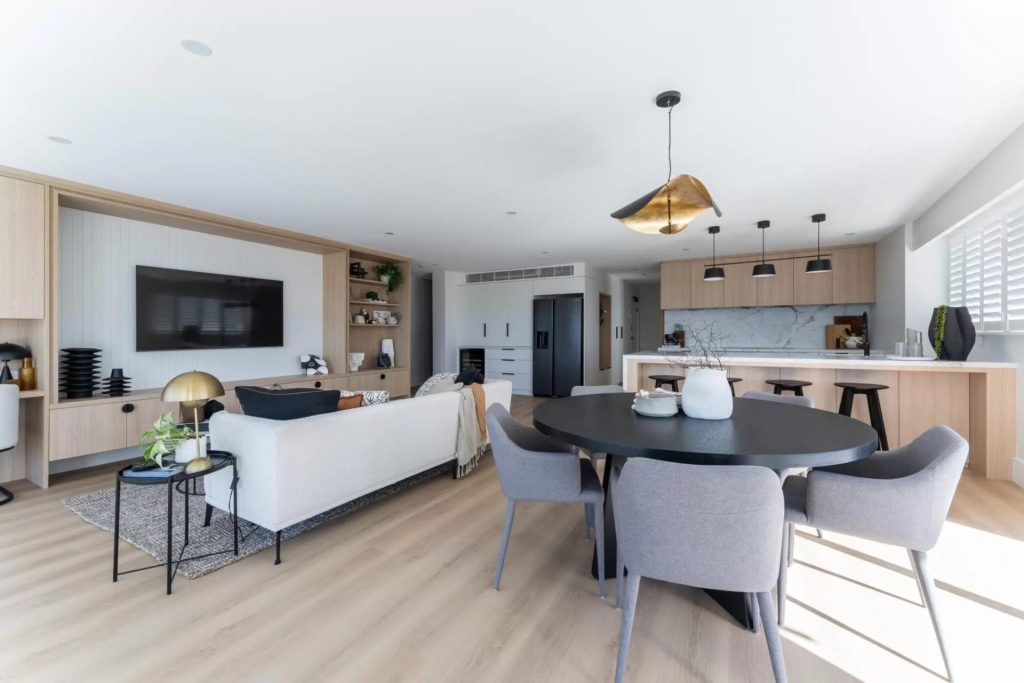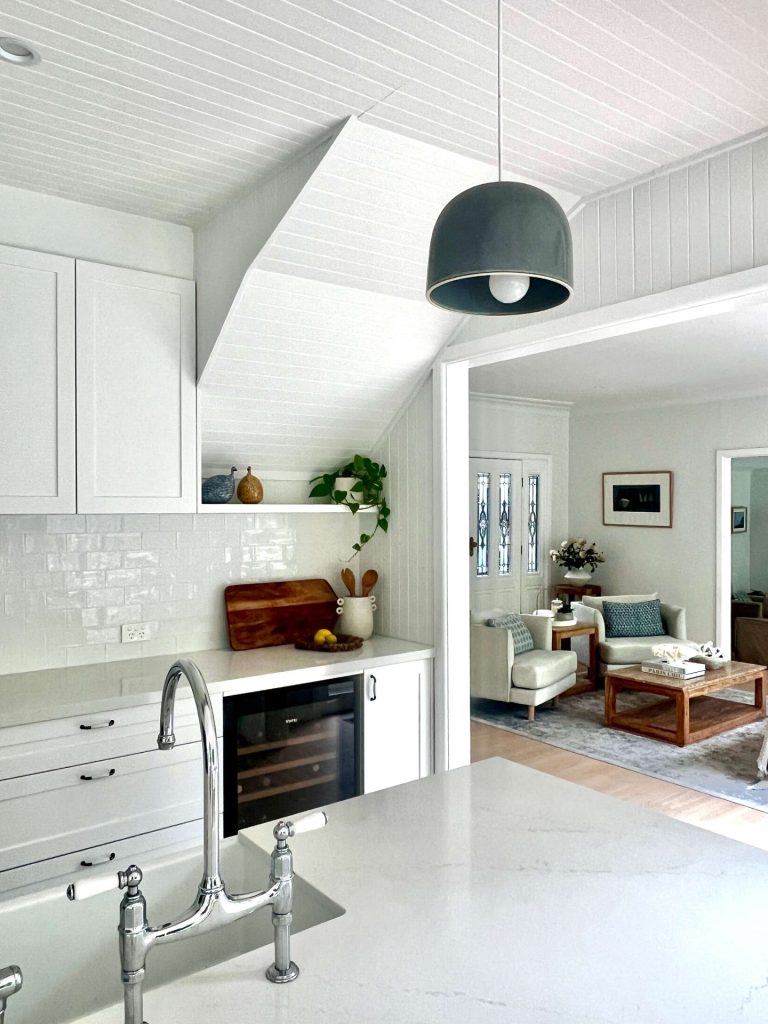Why Most Open-Plan Homes Feel Cold—And What I Do Instead
Open-plan living has become a go-to design choice for modern homes, offering light-filled, spacious interiors that encourage connection and flexibility. But many homeowners find that while open layouts look great in magazines, in reality, they can feel cold, echoey, and lacking in comfort.
So, how do you get the best of both worlds—the airiness of open-plan living with the warmth and cosiness of a well-designed home? Let’s break it down, tackling some of the most common open-plan concerns along the way.

How Do You Define Zones in an Open-Plan Space?
One of the biggest challenges with open-plan layouts is that they can feel too open—like one giant room with no clear function.
What I Do Instead:
✔ Use furniture to create “rooms within rooms”—A sectional sofa frames the lounge area, a large dining table anchors the eating space, and open shelving or a console subtly divides areas without blocking light.
✔ Try soft zoning with rugs—Placing a rug under your seating area instantly defines it as a separate, cozy space.
✔ Install partial dividers—Glass partitions, timber slats, or even statement pendant lights can help differentiate zones while maintaining openness.
Tip: Avoid pushing all furniture against the walls! Floating furniture naturally divides an open space while maintaining flow.

How Do You Make Open-Plan Living Feel Warm & Cosy?
Expansive spaces can sometimes feel stark, especially if they lack texture, layers, and visual interest.
What I Do Instead:
✔ Introduce layered lighting—Mix overhead lighting with wall sconces, table lamps, and pendant lights to create warmth and depth.
✔ Incorporate soft textures—Linen curtains, chunky knit throws, and upholstered furniture help soften a large space.
✔ Add natural materials—Wood, stone, and woven elements bring warmth and character to a space that might otherwise feel too sleek or minimalist.
Tip: If your open-plan space feels cold, check your lighting. A dimmable warm-white glow makes all the difference!

How Do You Control Noise in an Open-Plan Home?
Without walls to absorb sound, open spaces can quickly become noisy, especially with kids, pets, and multiple activities happening at once.
What I Do Instead:
✔ Use rugs, curtains, and soft furnishings—These absorb sound and reduce echoes.
✔ Opt for upholstered furniture—Leather and timber surfaces reflect noise, while fabric helps dampen it.
✔ Strategically place bookshelves—A well-filled bookshelf or cabinetry can act as a sound buffer between zones.
Tip: If you’re designing an open-plan home from scratch, consider adding acoustic ceiling panels or textured wall treatments to help with sound control.
How Do You Heat & Cool an Open-Plan Home Efficiently?
Large open spaces can be tricky to heat in winter and keep cool in summer, leading to higher energy bills.
What I Do Instead:
✔ Invest in good insulation—This is key to regulating temperature in any home, especially an open one.
✔ Use ceiling fans for airflow—They help circulate air and reduce reliance on heating and cooling systems.
✔ Layer window treatments—Sheer curtains let light in during the day, while heavier drapes provide insulation at night.
Tip: Zoning your heating and cooling system can save energy by allowing you to adjust temperatures for specific areas instead of the entire space.


How Do You Keep Cooking Odours From Spreading?
One downside of an open kitchen is that smells and grease can easily travel into the living and dining areas.
What I Do Instead:
✔ Invest in a high-quality range hood—The stronger the ventilation, the less likely smells will linger.
✔ Create a semi-open kitchen—Sliding glass doors or a pass-through window can provide flexibility between open and closed.
✔ Use air-purifying plants—Certain plants, like peace lilies and bamboo palms, help absorb odours and improve air quality.
Tip: If your kitchen opens directly into the living area, opt for non-porous, easy-to-clean surfaces to prevent grease build-up.

How Do You Style an Open-Plan Home Without It Looking Cluttered?
With fewer walls, storage can become an issue, and an untidy space is always on display.
What I Do Instead:
✔ Opt for built-in storage—Custom cabinetry, window seats with hidden storage, and multi-functional furniture help keep clutter at bay.
✔ Stick to a cohesive colour palette—Too many competing colours can make an open-plan space feel chaotic.
✔ Edit your décor—Less is more. A few well-placed statement pieces create impact without overwhelming the space.
Tip: Floating shelves or cabinetry with closed doors let you store everyday items while keeping visual clutter to a minimum.
Final Thoughts: Balancing Space & Comfort in Open-Plan Living
Open-plan homes don’t have to feel cold or overwhelming. With the right mix of zoning, lighting, textures, storage solutions, and sound control, you can create a home that feels both spacious and inviting.
Would you like help designing an open-plan space that feels warm and functional? Let’s chat—I’d love to bring your vision to life.


